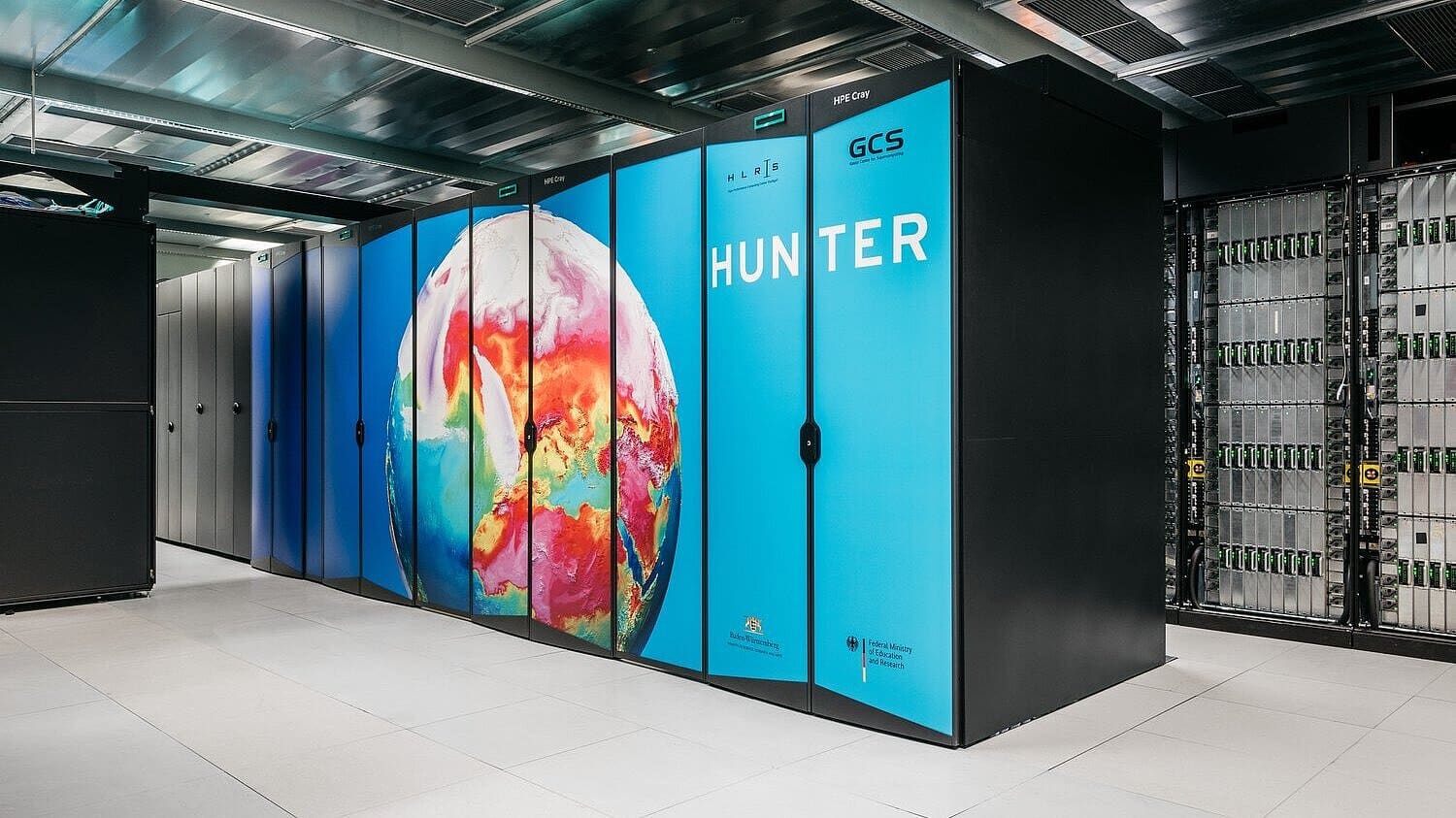Here’s the translation to American English:
The High-Performance Computing Center Stuttgart (HLRS) has officially inaugurated its new supercomputer, Hunter, a cutting-edge infrastructure designed to tackle the most complex challenges in engineering, climate modeling, biomedical research, and materials science. With an investment of 15 million euros, Hunter promises to revolutionize the landscape of high-performance computing (HPC) and artificial intelligence (AI) in Germany and Europe.
A Leap in High-Performance Computing
Hunter, based on the HPE Cray Supercomputing EX4000 architecture, is a system that redefines traditional HPC capabilities. With a theoretical peak performance of 48.1 Petaflops, it doubles the speed of its predecessor, Hawk, while introducing an innovative architecture that combines CPUs and GPUs in a single package through the AMD Instinct MI300A Accelerated Processing Units (APU). This setup not only enhances performance but also reduces energy consumption by 80% compared to previous systems.
Technical Specifications of Hunter
- 188 nodes equipped with high-performance HPE Slingshot interconnects.
- HPE Cray Supercomputing Storage Systems E2000, designed for large-scale input/output workflows.
- Direct liquid cooling without fans, a pioneering technology that improves energy efficiency.
- Advanced HPE performance management software for monitoring and optimizing energy use.
Key Applications of Hunter
Hunter is designed to support a wide range of critical applications in both science and industry:
- Advanced Modeling and Simulation: It will be an essential resource for research in aeronautics, astrophysics, and climatology.
- AI Development: Hunter will facilitate the training of deep learning models and the creation of multilingual autonomous agents, such as those developed by the startup Seedbox.ai.
- Convergent Workflows: Its hybrid architecture allows for the integration of simulations, data analysis, and artificial intelligence algorithms in a single working environment.
Sustainability and Energy Efficiency
One of the standout features of Hunter is its focus on sustainability. The inclusion of technologies such as dynamic power capping, developed in collaboration with HPE, allows energy consumption to be reduced by 20% without compromising performance. This approach not only minimizes environmental impact but also significantly reduces operational costs.
Additionally, Hunter will serve as a transitional system to its successor, Herder, scheduled for 2027. Herder, with a projected performance of several hundred petaflops, will be housed in a new facility designed with sustainable materials, photovoltaic panels, and heat distribution systems to maximize energy efficiency.
Impact on the Scientific and Business Community
Hunter reinforces Baden-Württemberg’s leadership in supercomputing and artificial intelligence. According to Petra Olschowski, Minister of Science, Research, and the Arts of the state, “Hunter is not just a technical innovation but a key infrastructure for scientific and industrial progress.” This supercomputer will enable advancements in sectors such as aeronautics, quantum mechanics, and energy transition, positioning Germany as an international benchmark.
A Promising Future for Computing in Europe
The implementation of Hunter also strengthens HLRS’s position as a key node in the European supercomputing network. This system will play a crucial role in initiatives such as HammerHAI, a European AI factory designed to democratize access to advanced artificial intelligence technologies.
The inauguration of Hunter marks the beginning of a new era in high-performance computing and artificial intelligence, consolidating HLRS as a leader in technological innovation and sustainability. As Europe moves into the era of exascale, Hunter and its successor, Herder, are shaping up to be essential components for maintaining global competitiveness in science, industry, and technology.
Source: HLRS and photo by Julian Holzwarth/HLRS

